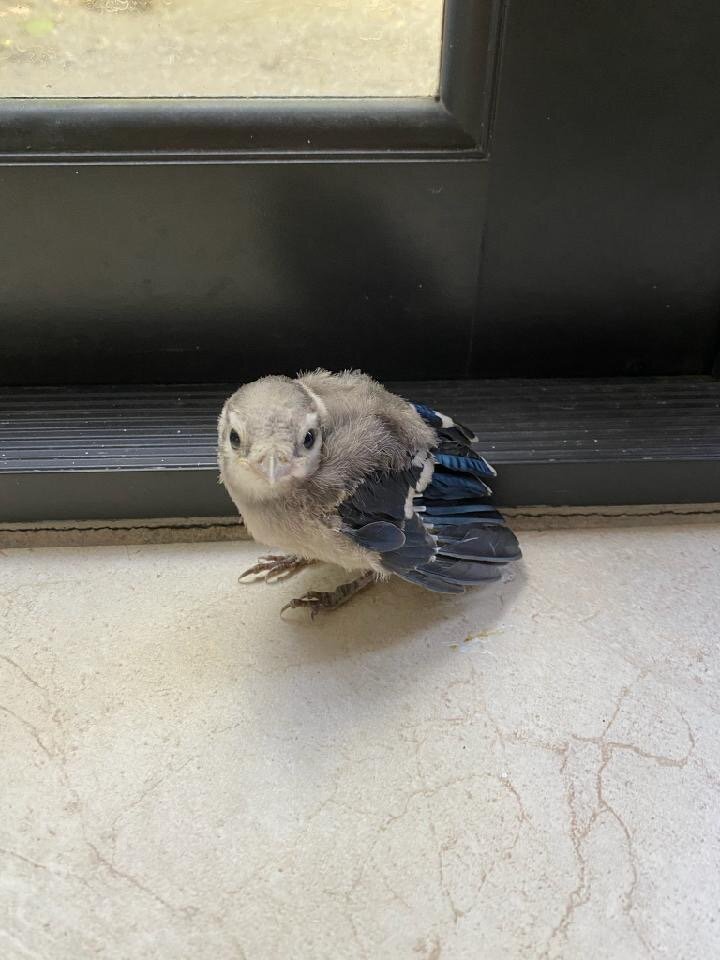The benefits of re-nesting songbirds
Written By: Samantha Martinez, Environmental Educator
Humans have the amazing ability to empathize with their surroundings. To put themselves in the shoes of beings other than themselves. This is unequivocally a characteristic that we should nurture and be proud of. However; our own empathy that is meant to be used to help those around us can sometimes harm them when we are not fully aware of the effects of our actions. The most common situation that we experience like this at Pelican Harbor Seabird Station involves baby songbirds or mammals. Today we will dive deeper into the needs of baby passerines, also known as songbirds. And remember, always reach out to your local wildlife center if you find any wildlife that seems to need help
Nestling Mockingbirds Calling Out For Their Next Feeding From Mom & Dad
From February to August Each year, parent songbirds will build a nest, incubate their eggs, and invest all of their energy into raising the next generation of their species. Inevitably they will run into a few roadblocks. For instance, a strong wind may knock all of their hard work completely out of the tree, babies and all. A few may be stumbled on by humans who are more than willing to help. Now someone's first instinct may be to take the babies home and begin to feed them. This may seem like the most logical course of action but is actually not the best way we can help and has actually been coined “Bird-Napping”. In cases of fallen nests with birds that are too young to learn to fly, re-nesting would be the best option.
But what about older birds? Baby songbirds learn to fly from the ground up and can be found hopping on the ground as they build up their wing muscles until they are able to fly. In the case of baby birds learning to fly, it may look strange to us to see a bird on the ground. However, this is a completely natural process that every songbird must go through so it is important that we respect this process and leave the fledgling birds to complete their flying lessons. While their parents may not be easily visible, they are keeping an eye out for their little ones.
Depending on their life stage, re-nesting or simply leaving them alone may be the right answer. Information on how to renest a baby bird and identify the life stage of said bird can be found here on the PHSS website. Two videos from our website will also be included at the end of this article.
Juvenile Northern Mockingbird Learning To Fly From the Ground Up
If you are still feeling iffy about the idea of leaving the baby birds, you should also be aware of the dangers you may unintentionally be imposing on these helpless younglings. Firstly, different species of songbirds each take up a specific niche in their environment when it comes to the foods they eat and baby songbirds can be extremely difficult to identify correctly. Feeding a baby bird something other than its natural diet can lead to digestion issues, growth stunting, a weakened immune system, or even death. Secondly, being raised by people can completely take away a bird's ability to behave normally in the wild and have the proper social skills to connect with other conspecifics (members of the same species) and may prevent them from breeding in the future. Though they are absolutely adorable and if raised by people can become quite friendly, wild birds or any wild animal for that matter should never be kept as a pet if it has the potential to have a full life in the wild since wild animals are biologically on every level different from domesticated animals and have much more complicated requirements to stay happy and healthy.
All in all, good people from all walks of life stumble upon baby birds during nesting season and hear the call for help from these younglings. It is important to keep our empathy intact and do what we can but also be aware and informed of the best ways to help these animals before our good deed goes awry. Whether that be to put them in a strawberry basket with some leaves and re-home them in the closest tree or bush and wait for mom and dad to return or if the best thing is to just leave them be so they can grow into healthy well-adjusted birds. Either way, it is important to not let our first judgment and good intentions take away the right of every wild animal to be free.
Found a baby bird? Here are some videos to help you identify the best course of action:





